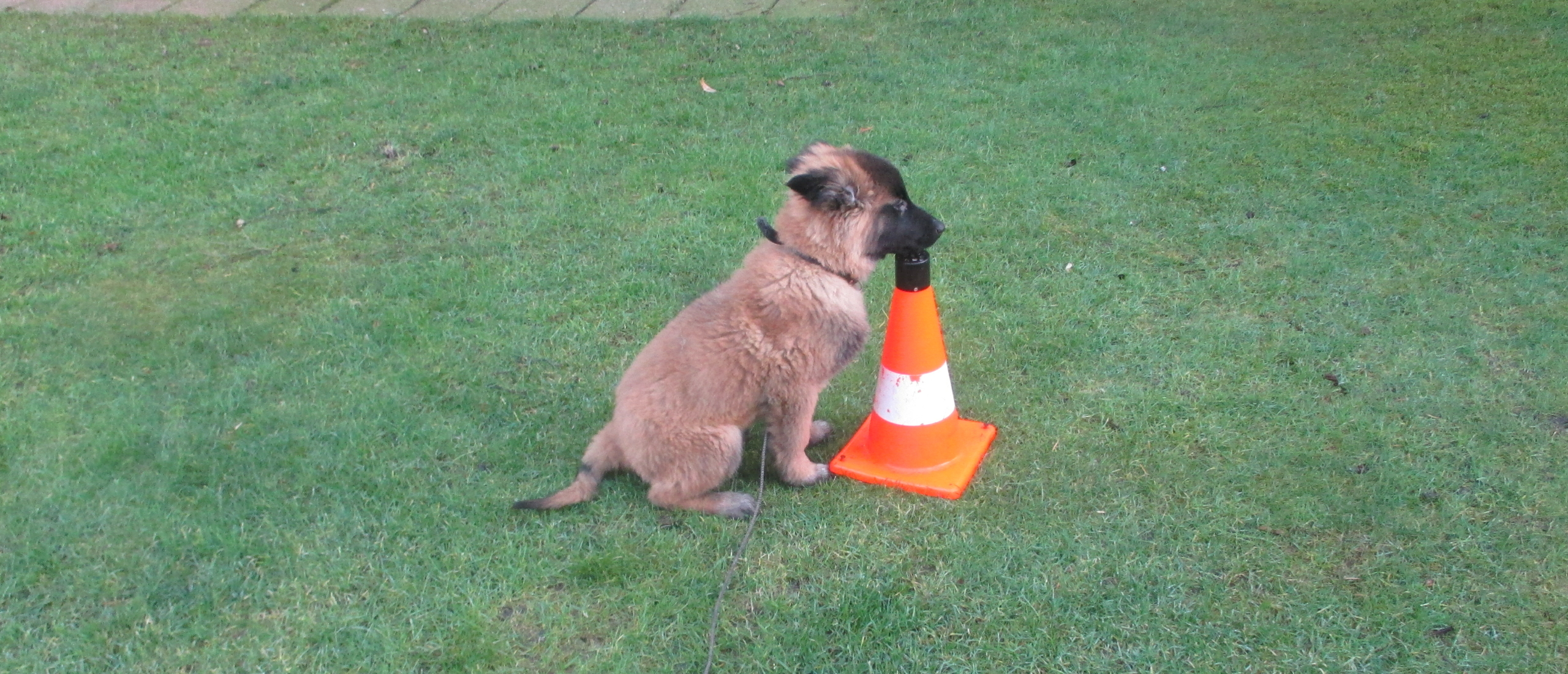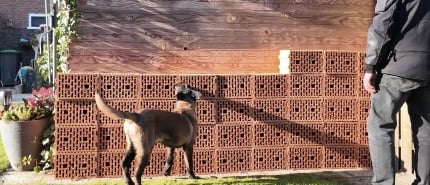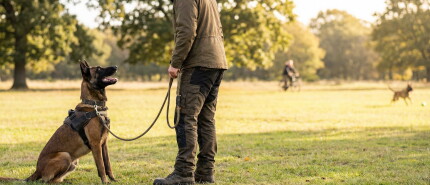The dog is always looking for his reward
The term "Free shaping" will sound more familiar to some than to others. It is a term used in dog training. With free shaping the dog only learns from his own behavior. He looks for what will give him his reward and this is marked by the boss with a clicker, or for example by a confirmation of the voice.
Of course this system works and it is possible to train your dog this way. Yet over the years I have also seen many disadvantages with this way of training. Because the dog is left completely free, you see that the dog is always busy trying to figure out in what way he will be rewarded. He tries everything in the hope that this behavior will be marked and he will get his reward.
We elicit the desired behavior
In our system the dog also learns from his own behavior, but we do this differently. We make it clear to the dog right from the start what behavior will be rewarded. This way, the dog does not keep looking for what he needs to do to get his reward.
The difference between free shaping and our system is that we initially provoke the dog to show the desired behavior and not wait for the dog to do it by itself. In other words, we provoke the dog and reward him immediately when he shows the desired behavior. For example, when teaching the exercise "sit". In the case of free shaping, you wait until the dog sits down of his own accord and then you mark this with the clicker or voice and then reward the dog. In our system, we put a food in our hand, and coax the dog to sit. The moment the dog sits down, he is immediately rewarded and receives the food. So we are provoking the desired behavior and not waiting for the dog to do it on its own.
So from the beginning we make it clear to the dog what the intention is and what will bring him his reward. He is not busy with all kinds of other things just to try to get his reward. If we have taught the basics in this way, we can expand this in small steps. The dog will start thinking and will want to perform the behavior that gives him his reward and will eventually learn very quickly from his own behavior.
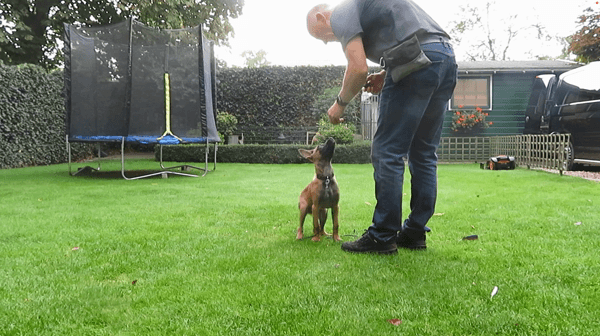 In this puppy, the desired behavior is elicited with a treat
In this puppy, the desired behavior is elicited with a treat
When we train our dogs for the first steps of tracking, we first teach the indication behavior. In a short period of time, we teach the dog to look for the head of a nail and then indicate to it neatly. We then start with a larger object and provoke the dog to go to it with his nose. As soon as he does this, he is rewarded immediately. We then repeat this very often in a short time until the dog understands what he has to do. Then we make the object smaller very quickly and the dog learns that the object is important to be rewarded. By training this way the dog is very motivated to find the object and we teach our dogs within 1 week to look for and point to a small nail.
Would we teach this exercise with a free shaping system, it is almost impossible to get results that quickly. It is then very difficult to teach the dog to go to a small object with his nose on his own and to indicate to it as well.
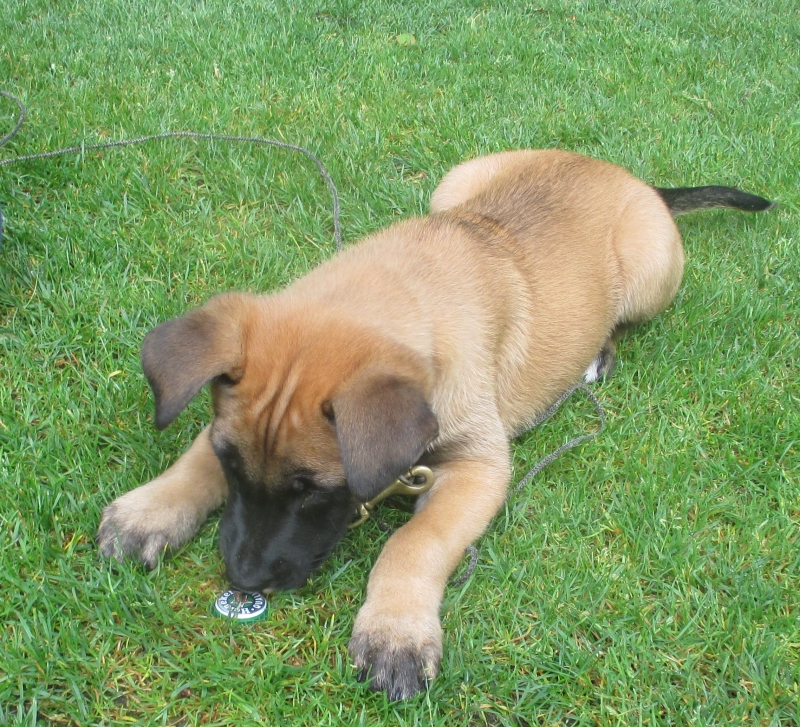 This puppy was taught the indication of a beer cap in a few sessions
This puppy was taught the indication of a beer cap in a few sessions
Sometimes an exercise cannot be taught differently
Do we never use a free shaping system at all? Sometimes we do! When we have to teach a dog a difficult exercise where it is difficult or impossible to elicit the desired behavior. For example, in the exercise where we want the dog to sit in front of a pawn with its nose against the top of the pawn and also one paw on the top of the pawn. This is something we cannot do with food. In such a case we do use a free shaping system. We take a pawn and place it with the dog and mark in small steps the behavior we want to see. By doing this, the dog learns from his own behavior, but looks for himself what will bring him the reward.
The big difference between free shaping and our system is that we make it clear to the dog from the start what behavior will get him his reward. The dog does not try everything and is not constantly looking for what will bring him his reward. But ultimately, in our system, the dog also learns from his own behavior.
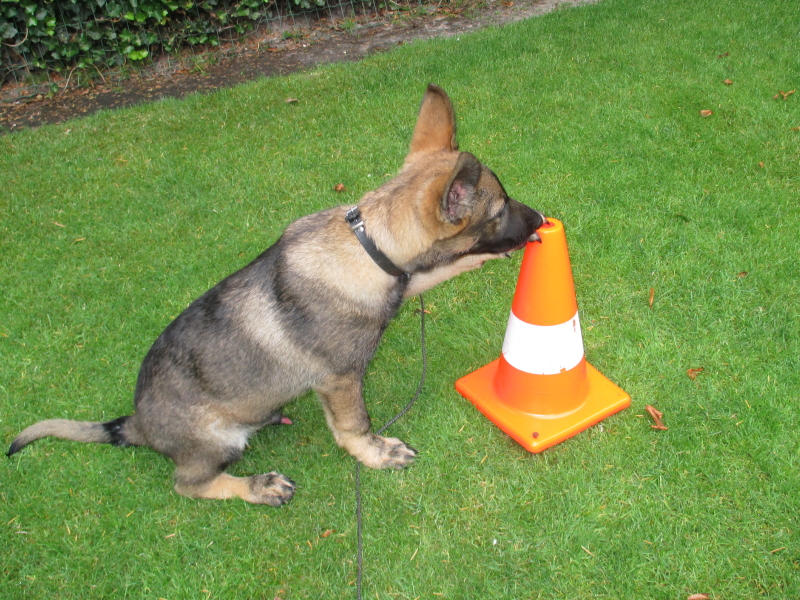 This dog was taught with free shaping and the clicker to touch the pawn with his nose and paw
This dog was taught with free shaping and the clicker to touch the pawn with his nose and paw

